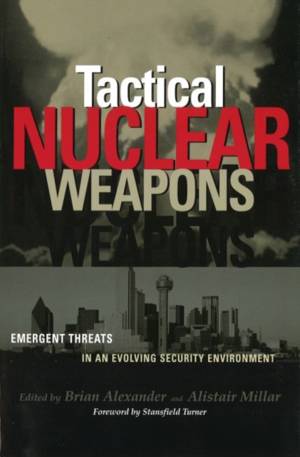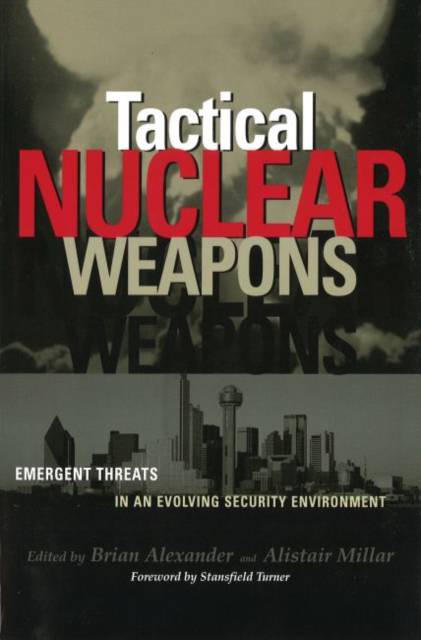
- Afhalen na 1 uur in een winkel met voorraad
- Gratis thuislevering in België vanaf € 30
- Ruim aanbod met 7 miljoen producten
- Afhalen na 1 uur in een winkel met voorraad
- Gratis thuislevering in België vanaf € 30
- Ruim aanbod met 7 miljoen producten
Zoeken
Tactical Nuclear Weapons
Emergent Threats in an Evolving Security Environment
Brian Alexander, Alistair Millar
Paperback | Engels
€ 37,45
+ 74 punten
Omschrijving
For three decades, arms control treaties have provided a legal basis for limiting and reducing long-range nuclear weapons. However, thousands of sub-strategic, or tactical, nuclear weapons (TNWs) are not monitored or controlled by any existing treaties or formal agreements, even though they can pose security risks equal to or exceeding those of strategic nuclear weapons. As the world has seen, the rise of international terrorism highlights the potential dangers of tactical nuclear weapons. Because they can be relatively small and portable--particularly but not exclusively in the case of so-called "suitcase" bombs - tactical nuclear weapons are easier to transport and more vulnerable to theft than other nuclear weapons. In terrorists' hands, they would wreak havoc far surpassing the devastation of September 11. According to the Department of Defense, terrorists would most likely use a nuclear weapon against either a military installation or a political target (a seat of government, large population center, or commercial port city). This possibility raises the stakes in the international effort to control and reduce TNWs. Despite the critical need for a more informed debate on the issues involving tactical nuclear weapons, little has been published previously on this subject. To bring more attention to this long-ignored danger, Brian Alexander and Alistair Millar have assembled a cadre of ten experts who frame the debate on a multitude of issues ranging from terrorism and arms control to the weapons programs of Russia, India, Pakistan, and China.
Specificaties
Betrokkenen
- Auteur(s):
- Uitgeverij:
Inhoud
- Aantal bladzijden:
- 240
- Taal:
- Engels
Eigenschappen
- Productcode (EAN):
- 9781574885859
- Verschijningsdatum:
- 1/07/2003
- Uitvoering:
- Paperback
- Formaat:
- Trade paperback (VS)
- Afmetingen:
- 152 mm x 232 mm
- Gewicht:
- 326 g

Alleen bij Standaard Boekhandel
+ 74 punten op je klantenkaart van Standaard Boekhandel
Beoordelingen
We publiceren alleen reviews die voldoen aan de voorwaarden voor reviews. Bekijk onze voorwaarden voor reviews.











